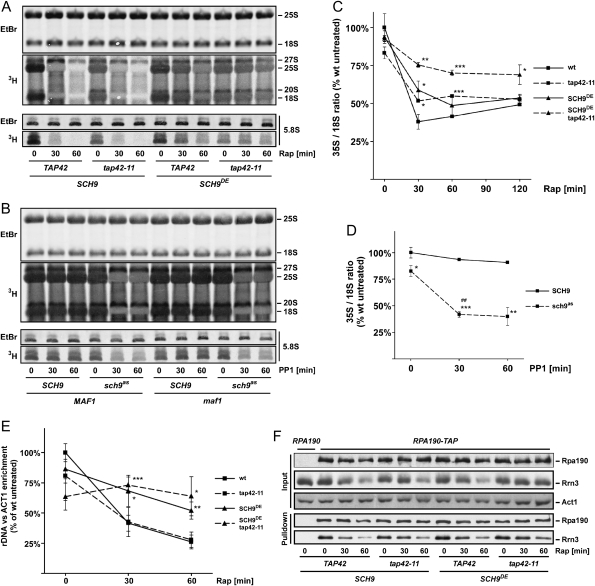Figure 5.
TORC1 regulates RNA Pol I via Sch9. (A) Rapamycin treatment decreases the processing/expression of RNA pol I-derived rRNA species. (B) Sch9 inhibition decreases the processing/expression of RNA pol I-derived rRNA species. (A,B) Synthesis/processing of rRNA was assayed by metabolic labeling with 3H-uracil. Total RNA loaded was determined by staining with ethidium bromide (EtBr). (C) Rapamycin treatment decreases 35S pre-rRNA synthesis. (D) Sch9 inhibition decreases 35S pre-rRNA synthesis. (C,D) 35S and 18S rRNA levels were determined by primer extension—gels are shown in Figure S9—and their ratios were plotted. Values are means of three independent experiments ± SD. (E) RNA Pol I recruitment at the rDNA locus depends on Sch9. Association of RPA190-13myc with the rDNA locus was determined by ChIP. Values are means of four independent experiments ± SD. Statistical confidences for C–E: (*) P < 0.05; (**) P < 0.01; (***) P < 0.001 versus wild-type control; (##) P < 0.01 versus untreated isogenic control. (F) Sch9 does not regulate Rrn3–RNA Pol I interaction. Association of Rrn3-5HA with Rpa190-TAP was assayed using TAP pull-downs and SDS-PAGE/Western blotting. (A–F) Relevant genotypes and rapamycin/1NM-PP1 treatment times are indicated.

